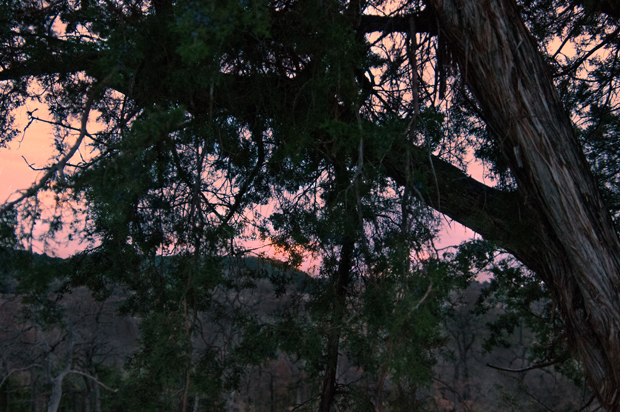Farm & Ranch
Ag Elsewhere: California

Photo and story by Lainey Smith
When I sat down with the editor of NTFR, we discussed several topics to start a new year of exploration into California Agriculture.Originally, this article would cover how farmers and ranchers were recovering from a highly active and highly destructive fire season. As I opened up my laptop to begin setting up interviews, words scrolled across my screen—The Camp Fire.
Within days, The Camp Fire uncontrollablyburned 153,336 acres and claimed 85 lives. With no prior warning, fourteenthousand homes burned and those who inhabited them lost everything. The firefront moved so fast, rescue crews abandonedevacuation procedures—there wasn’t time.
At hospitals and convalescent homes,patients were thrown into vehicles headed toward safety. As the flames subsided,this provided a new challenge—finding the survivors. Evacuations were so chaotic, and the flames burned so hot, hundreds were reported missing.
Cadaver dogs were brought in to find those who perished, while family members went on local news stations in search of missing loved ones. At the time of article submission 249 people were still missing.
The Camp Fire is being named the most destructive fire in California history. What strikes most odd is the fact that this fire occurred months past what is considered California’s “fire season.” While the cause of the fire is still under investigation, The Camp Fire is being classified as a vegetation fire, intensified by the abundance of dead, overgrown forest.
While the Camp Fire may have caught everyone off guard, it was hardly a surprise given the circumstances.When it comes to public land use, lawmakers fight varying interest groups such as loggers and ranchers, while trying to appease lobbyists and environmental organizations.
California is made up of 640 million acres of public land and is home to nine National parks. While fighting over how to best use and maintain the land, the land is not maintained at all. Heavy restrictions are passed through legislature out of fear of extreme lobbyists. The result—a forestry service unable to make any decisions for the health of the land without going through endless bureaucratic red tape.
To read more pick up a copy of the January 2019 NTFR issue. To subscribe call 940-872-5922.
Farm & Ranch
Managing Show Cattle Through The Winter

By Heather Welper
Husband and wife duo, Heather and Calvin Welper, are the Co-Owners and Operators or Two C Livestock, located in Valley View, Texas.
The pair’s operation has a show cattle focus where they raise and sell purebred heifers of all breeds and club calf Hereford steers.
When it comes to show cattle, the Welpers know a thing or two including how to prepare for the cold winter months and the Texas major show season run.
To read more, pick up a copy of the November edition of North Texas Farm & Ranch magazine, available digitally and in print. To subscribe by mail, call 940-872-5922.

Farm & Ranch
Double M Ranch & Rescue

By Hannah Claxton, Editor
As the sun rises each day, so do the dozens of mouths that Meghan McGovern is responsible for getting fed. Rather than the sounds of a rooster crowing, McGovern hears the bellows and bleats of a variety of exotic deer, the chortle of kangaroos, the grunts of water buffaloes, and the chirps of a lemur.
Nestled against the banks of the Red River, the Double M Ranch and Rescue, with its high game fences and deer sprinkling the landscape,s its in stark contrast to the surrounding ranches.
“Having deer is kind of like eating potato chips- you can never actually have just one,” said McGovern with a laugh.
McGovern has several herds to take care of- fallow deer, axis deer, water buffalo, goats, and bison. In smaller numbers, there’s also a few kangaroos, a lemur, a potbelly pig, a pair of zebras, a watusi, and a few horses.
To read more, pick up a copy of the November edition of North Texas Farm & Ranch magazine, available digitally and in print. To subscribe by mail, call 940-872-5922.

Farm & Ranch
Acorn Toxicity

By Barry Whitworth, DVM, MPH
With the prolonged drought, most pastures in Oklahoma end up in poor condition. With the lack of available forage, animals may go in search of alternative foods.
If oak trees are in the pastures, acorns may be a favorite meal for some livestock in the fall. This may result in oak poisoning.
Oak leaves, twigs, buds, and acorns may be toxic to some animals when consumed.
To read more, pick up a copy of the November edition of North Texas Farm & Ranch magazine, available digitally and in print. To subscribe by mail, call 940-872-5922.

-

 Country Lifestyles2 years ago
Country Lifestyles2 years agoScott & Stacey Schumacher: A Growth Mindset
-

 Country Lifestyles8 years ago
Country Lifestyles8 years agoStyle Your Profile – What your style cowboy hat says about you and new trends in 2017
-

 HOME8 years ago
HOME8 years agoGrazing North Texas – Wilman Lovegrass
-

 Outdoor10 years ago
Outdoor10 years agoButtercup or Primrose?
-

 Equine1 year ago
Equine1 year agoThe Will to Win
-

 Country Lifestyles5 years ago
Country Lifestyles5 years agoAmber Crawford, Breakaway Roper
-

 Country Lifestyles9 years ago
Country Lifestyles9 years agoJune 2016 Profile – The man behind the mic: Bob Tallman
-

 Country Lifestyles8 years ago
Country Lifestyles8 years agoDecember 2016 Profile, Rusty Riddle – The Riddle Way




